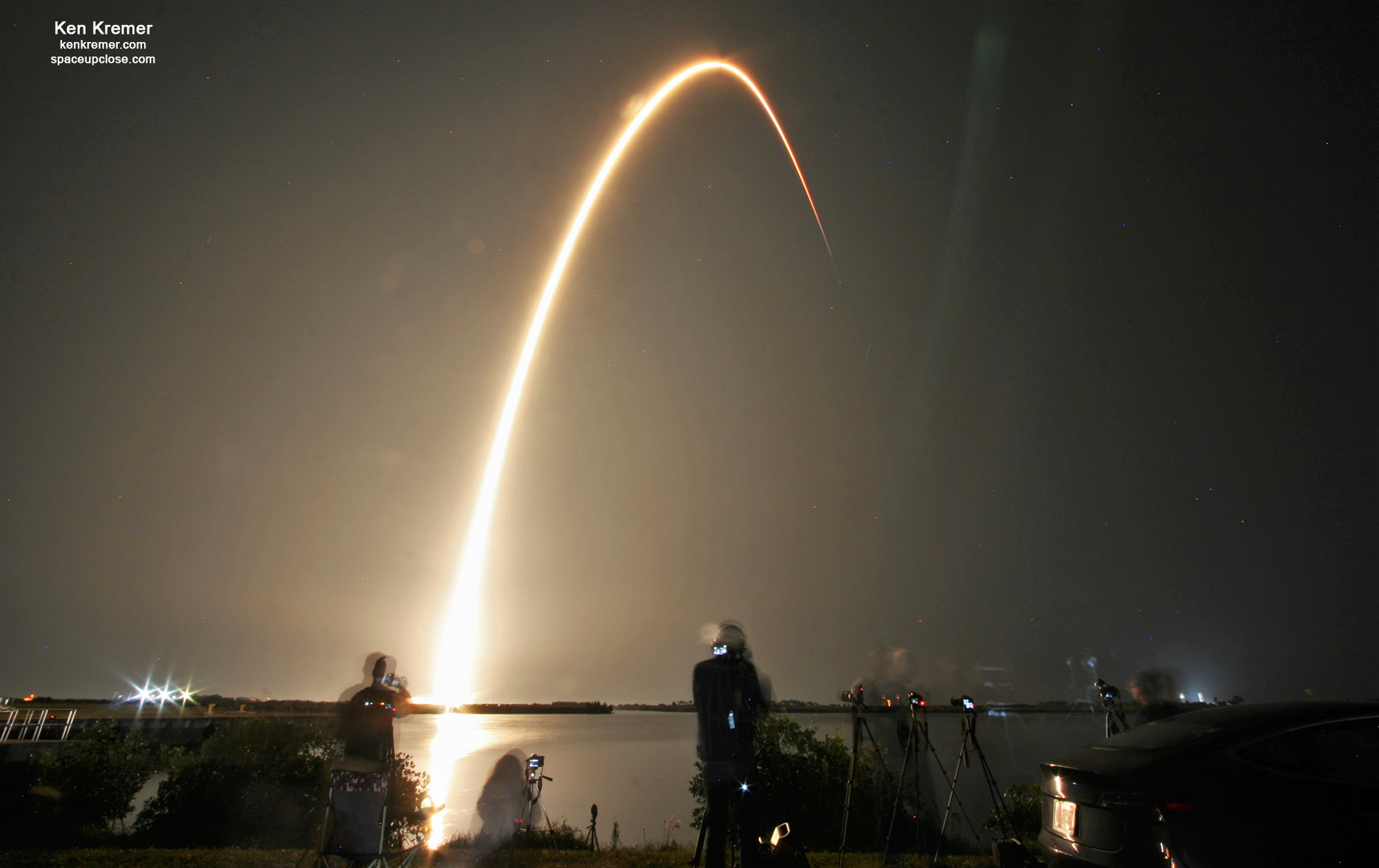
KENNEDY SPACE CENTER, FL – NASA’s newest X-Ray astronomy mission, the small Imaging X-Ray Polarimetry Explorer (IXPE) space telescope launched just past midnight, Thursday, Dec. 9 on a used SpaceX Falcon 9 rocket from the Kennedy Space Center on Florida’s Space Coast on a mission to study the most extreme and violent X-Ray objects in the universe such as supermassive black holes and neutron stars.
Under outstanding weather conditions with relatively warm outside temperatures and no humidity the IXPE blastoff put on a spectacular sky show for those space and science fans and night owls who visited for an eyewitness view of the middle-of-the-night blastoff!
IXPE lifted off right on schedule aboard a now 5x flown SpaceX Falcon 9 rocket from Launch Complex 39A on Thursday, Dec. 9, at 1 a.m. EST (0600 GMT) from NASA’s Kennedy Space Center in Florida.
“Liftoff of Falcon 9 and IXPE, a new set of X-ray eyes to view the mysteries of our skies,” said NASA TV launch commentator Derrol Nail during NASA’s live launch webcast.

IXPE marks SpaceX’s 28th launch of the year (a new record) and now begins a 2-year primary mission to explore the most energetic and violent objects in the Universe.
Watch this NASA blastoff video:
🚀 Go #IXPE! Our newest X-ray observatory blasted off at 1:00am EST.
This begins a new quest to unlock the secrets of some of the most energetic objects in our universe, from black holes to neutron stars. https://t.co/Cx6HCb5rFS pic.twitter.com/G6Yt7snD3N
— NASA (@NASA) December 9, 2021
The Falcon 9 launched on a highly energetic trajectory to place the low mass IXPE into a circular orbit of approximately 372 miles (600 kilometers) altitude and use a ‘dogleg’ change of plane maneuver from the launch inclination of 28.5 degrees to achieve a 0 degree inclination with respect to the Earth’s equator,
This change of plane required most of the Falcon 9s fuel and prevented a landing of the first stage on the Cape
The rocket’s upper stage released the IXPE space telescope payload some 33 minutes later.
Separation confirmed! #IXPE is flying free from its @SpaceX Falcon 9 rocket as it spreads its solar panels and looks to communicate with Earth. pic.twitter.com/0YgDGqyc4R
— NASA (@NASA) December 9, 2021
By using an orbit hugging the equator it will minimize the X-ray instrument’s exposure to radiation in the South Atlantic Anomaly, the region where the inner Van Allen Radiation belt comes closest to Earth’s surface.
Approximately one minute later, the spacecraft unfurled its solar arrays and IXPE entered its orbit around Earth’s equator at an altitude of approximately 372 miles (600 kilometers).
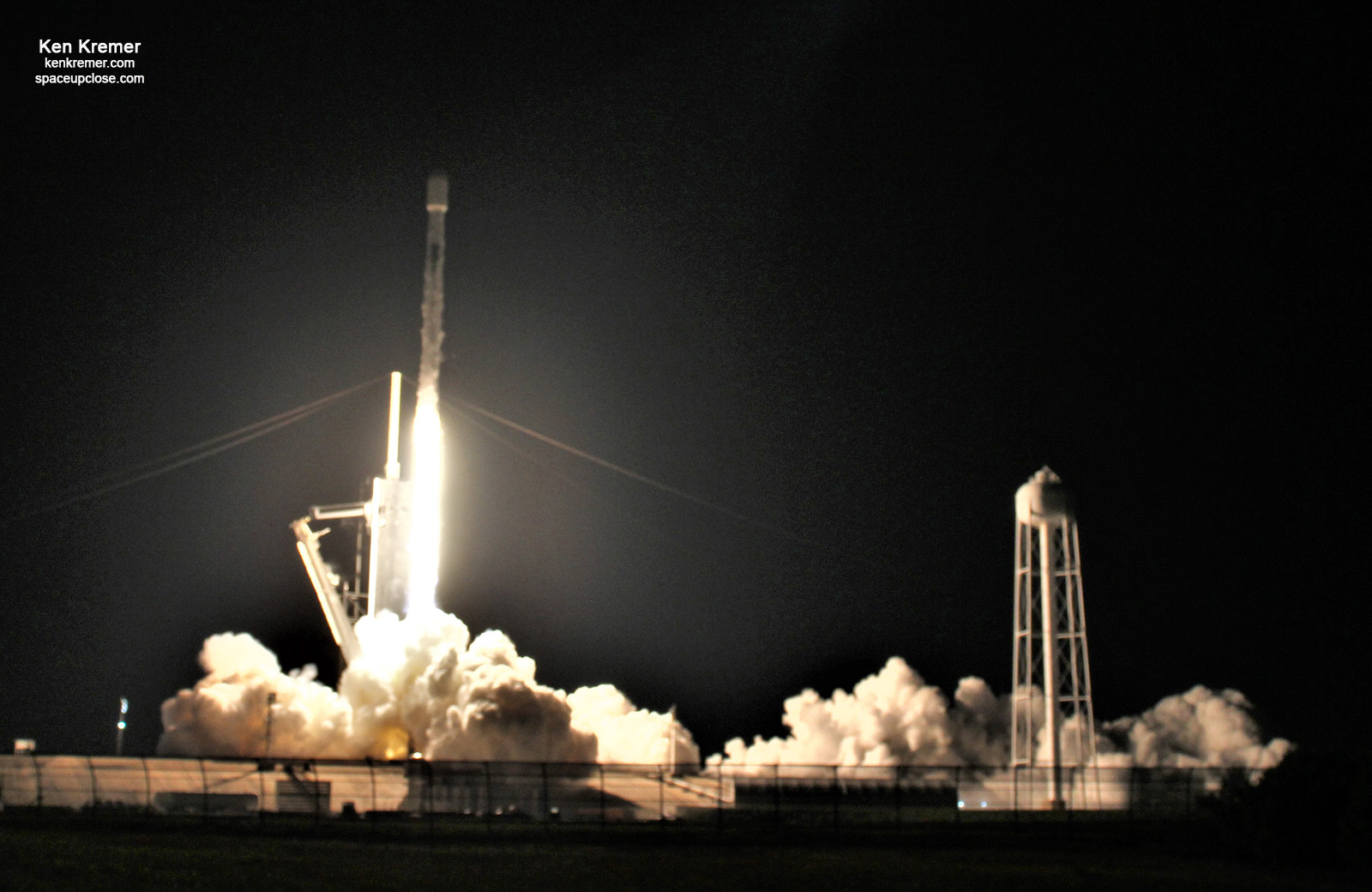
NASA confirmed that about 40 minutes after launch, mission operators received the first spacecraft telemetry data.
“We have signal acquisition, meaning teams are now communicating with NASA’s Imaging X-ray Polarimetry Explorer (IXPE) spacecraft, as it embarks on its two-year journey to study changes in the polarization of X-ray light through some of the universe’s most extreme sources, including black holes, dead stars known as pulsars, and more,” NASA reported.
“Everything has gone smoothly; we just crossed over Africa and acquired signal of the spacecraft,” said NASA Senior Launch Director Omar Baez.
“They’ll start exposing the solar rays and doing their deployments, so you can’t ask for any better than that.”
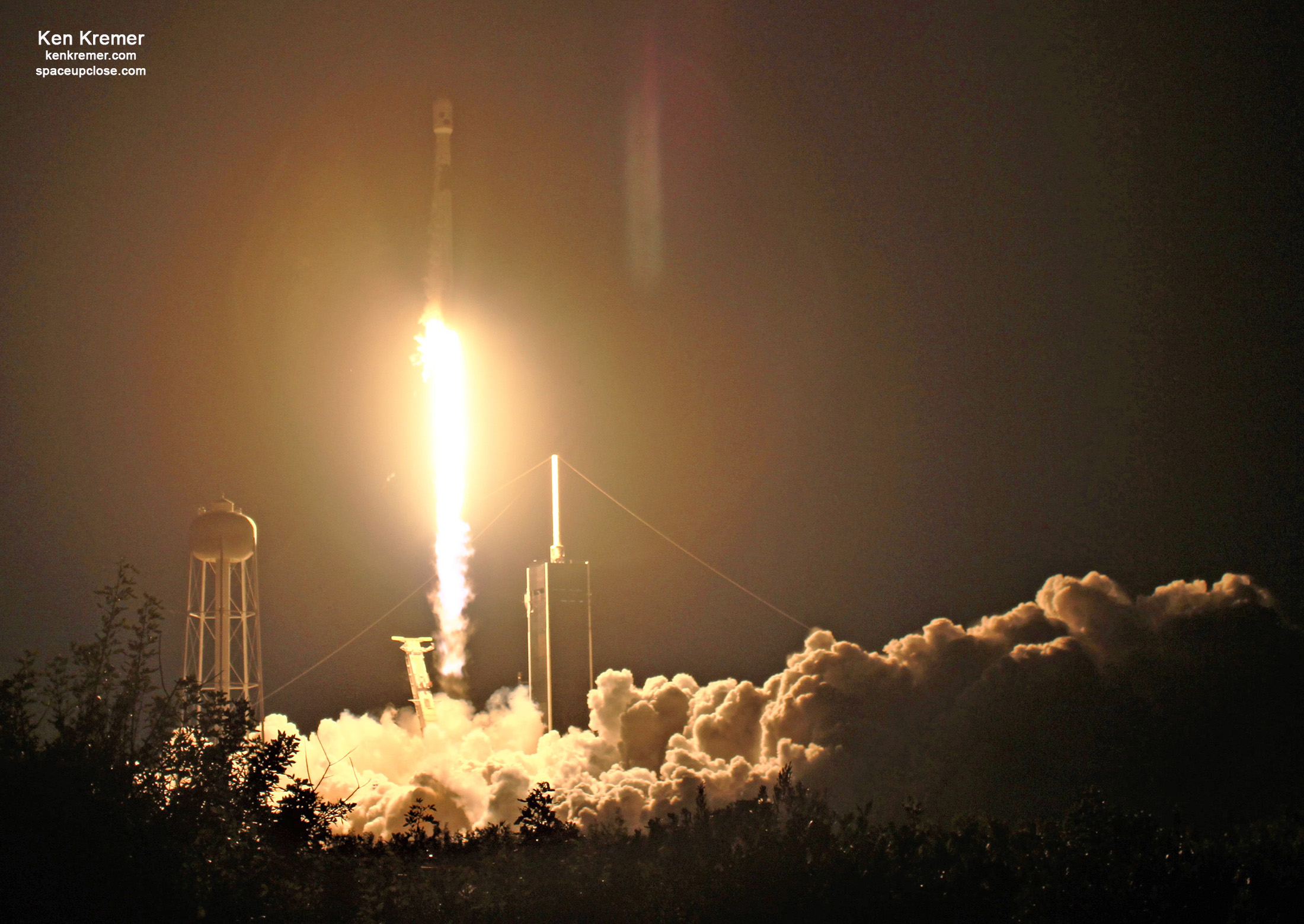
Although the $214 million IXPE telescope is rather small in size like a refrigerator it has a big goal.
The IXPE observatory is NASA’s 1st probe dedicated to measuring and studying the polarization of X-rays coming to us from some of the universe’s most extreme and mysterious sources including supernova remnants, supermassive black holes, dead stars known as pulsars and dozens of other high-energy objects.
It has a mass of just 727 pounds (330 kilograms) and measures 1.1 m (3 ft 7 in) in diameter and 5.2 m (17 ft) tall. When the solar arrays are fully deployed it measures 2.7 m (8 ft 10 in).
IXPE fills only a very small volume inside the Falcon 9 payload shroud.
In fact IXPE is the smallest dedicated payload ever launched on a Falcon 9.
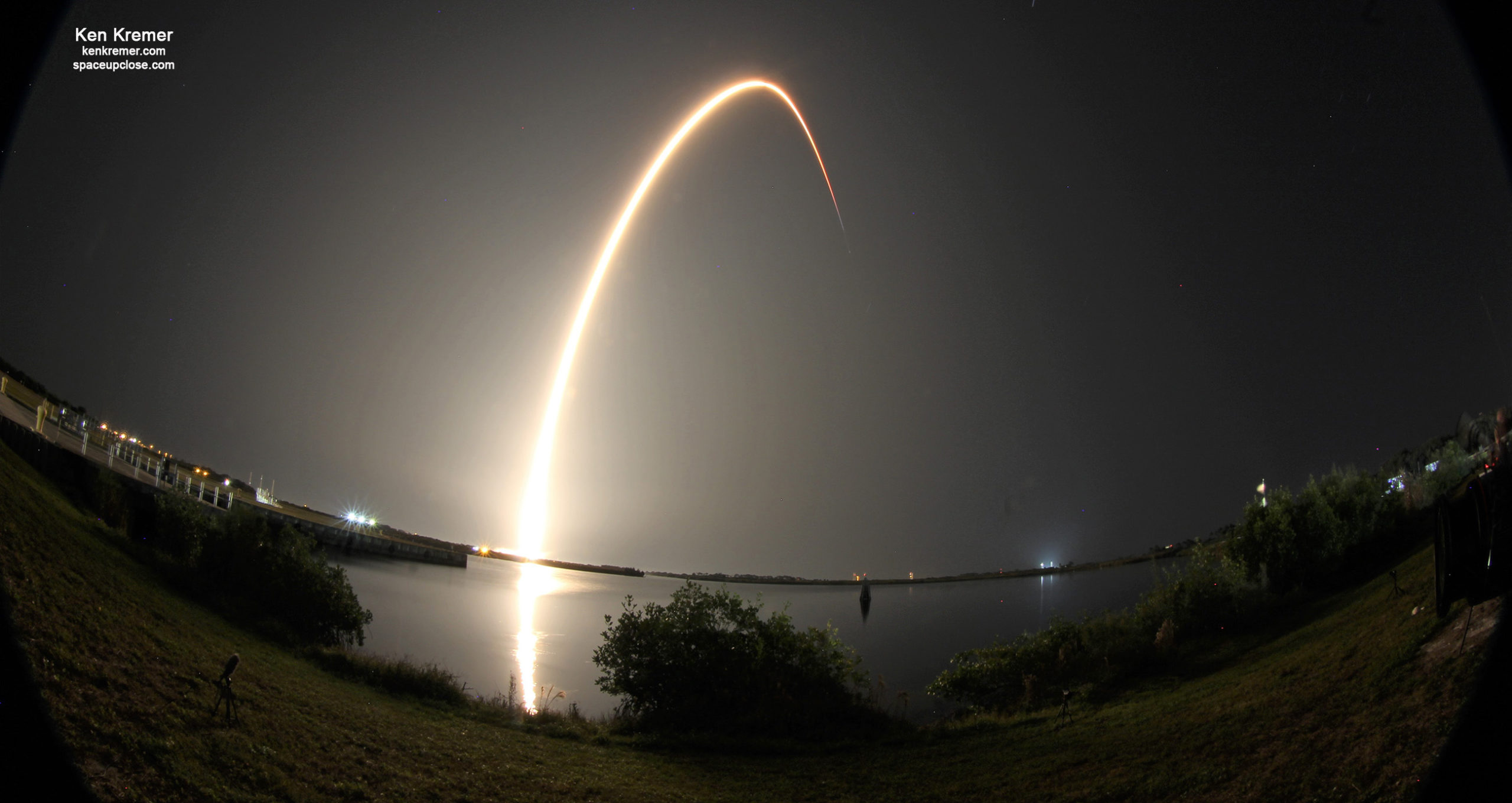
IXPE is an international science mission conducted as a joint effort with the Italian Space Agency (ASI). ASI supplied the state-of-the-art detectors
IXPE promises to reveal hidden X-ray features of the universe’s most energetic objects like black holes and supernovae – and provide insight into our understanding of X-ray production in objects such as neutron stars and pulsar wind nebulae, as well as stellar and supermassive black holes,” according to NASA officials.
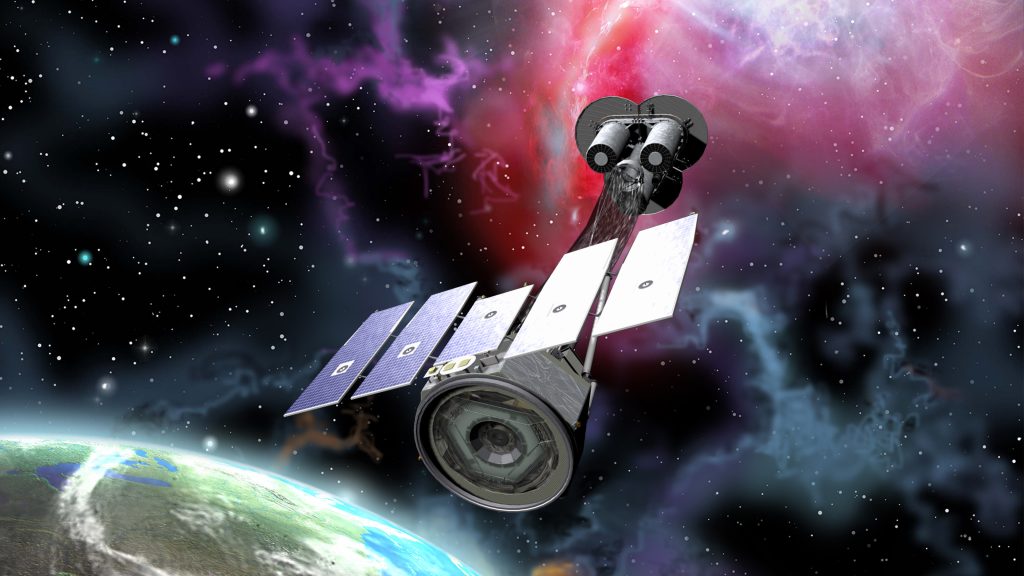
“IXPE represents another extraordinary first,” said Thomas Zurbuchen, associate administrator for the Science Mission Directorate at NASA Headquarters in Washington, in a statement.
“Together with our partners in Italy and around the world, we’ve added a new space observatory to our fleet that will shape our understanding of the universe for years to come. Each NASA spacecraft is carefully chosen to target brand new observations enabling new science, and IXPE is going to show us the violent universe around us – such as exploding stars and the black holes at the center of galaxies – in ways we’ve never been able to see it.”
Watch this NASA video explaining what polarization means:
Our newest orbiting observatory will study the universe's polarized X-rays. But why does it matter if an X-ray is polarized… and what does being "polarized" mean, anyway?@NASAUniverse has the explanation on how #IXPE is upgrading NASA's X-ray vision: https://t.co/gY20aNJj0s pic.twitter.com/nODp1TnDFQ
— NASA (@NASA) December 10, 2021
“It is an indescribable feeling to see something you’ve worked on for decades become real and launch into space,” said Martin Weisskopf, IXPE’s principal investigator at NASA’s Marshall Space Flight Center in Huntsville, Alabama. Weisskopf came up with the idea for the spacecraft and has conducted seminal experiments in X-ray astronomy since the 1970s.
“This is just the beginning for IXPE. We have much work ahead. But tonight, we celebrate!”
#IXPE launched into orbit to give us a new look at polarized X-rays—but what will they actually tell us about our cosmos? 👇 https://t.co/wkq3jBn4cP
— NASA (@NASA) December 10, 2021
The IXPE spacecraft includes three identical state-of-the-art space telescopes with sensitive detectors capable of measuring the polarization of cosmic X-rays, allowing scientists to answer fundamental questions about extremely complex environments in space where gravitational, electric, and magnetic fields are at their limits.
The Imaging X-ray Polarimetry Explorer – IXPE – mission is set to launch Dec. 9 at 1am ET. In space, #IXPE will explore the leftovers of exploded stars, black holes, and more by looking at a special property of light called polarization. Learn more: https://t.co/4CHfVjf1PN pic.twitter.com/wVDjLyAR0U
— Thomas Zurbuchen (@Dr_ThomasZ) December 9, 2021
Polarization is a property of light that holds clues to the environment from which the light originates.
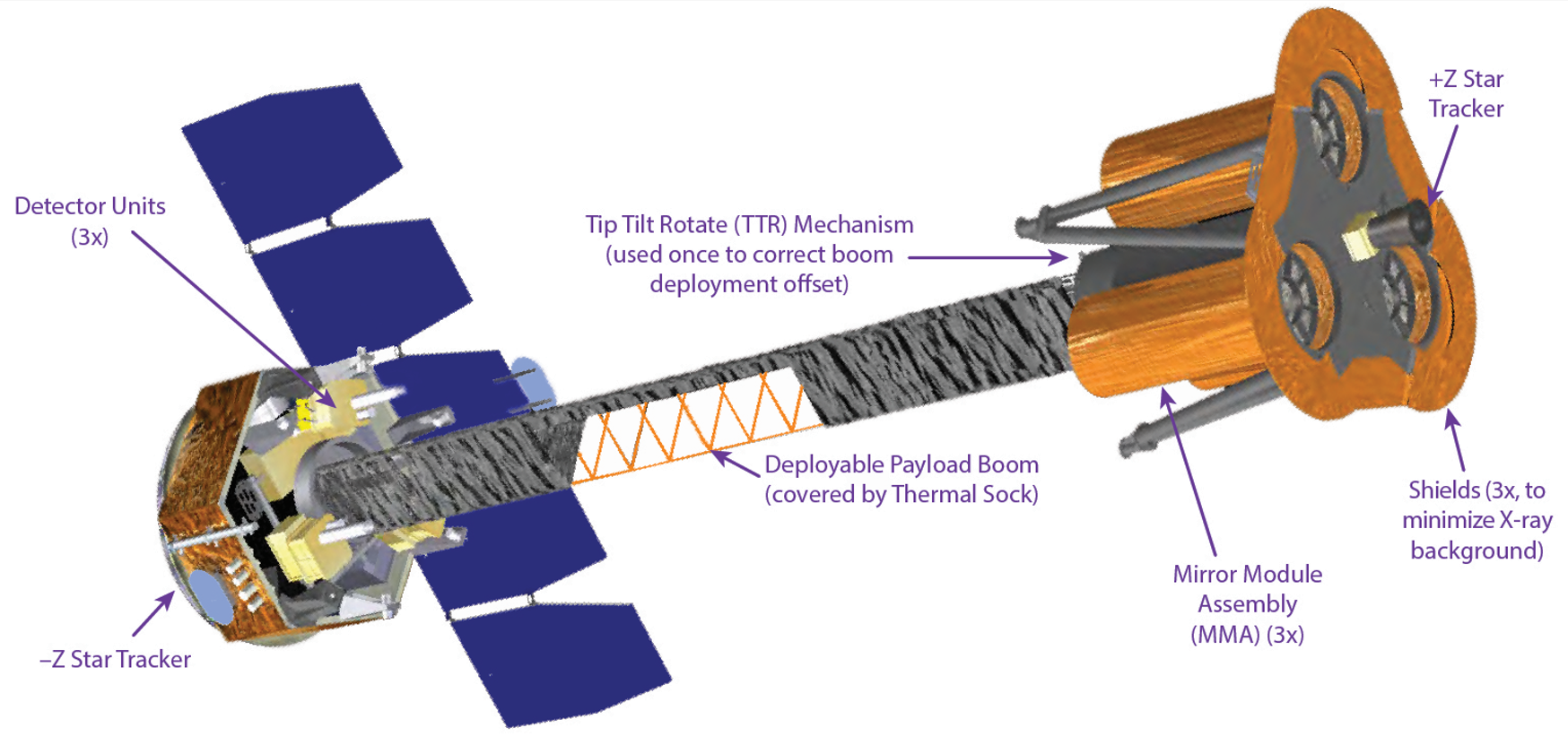
The new mission builds on and complements the scientific discoveries of other telescopes, including the Chandra X-ray Observatory, NASA’s flagship X-ray telescope.
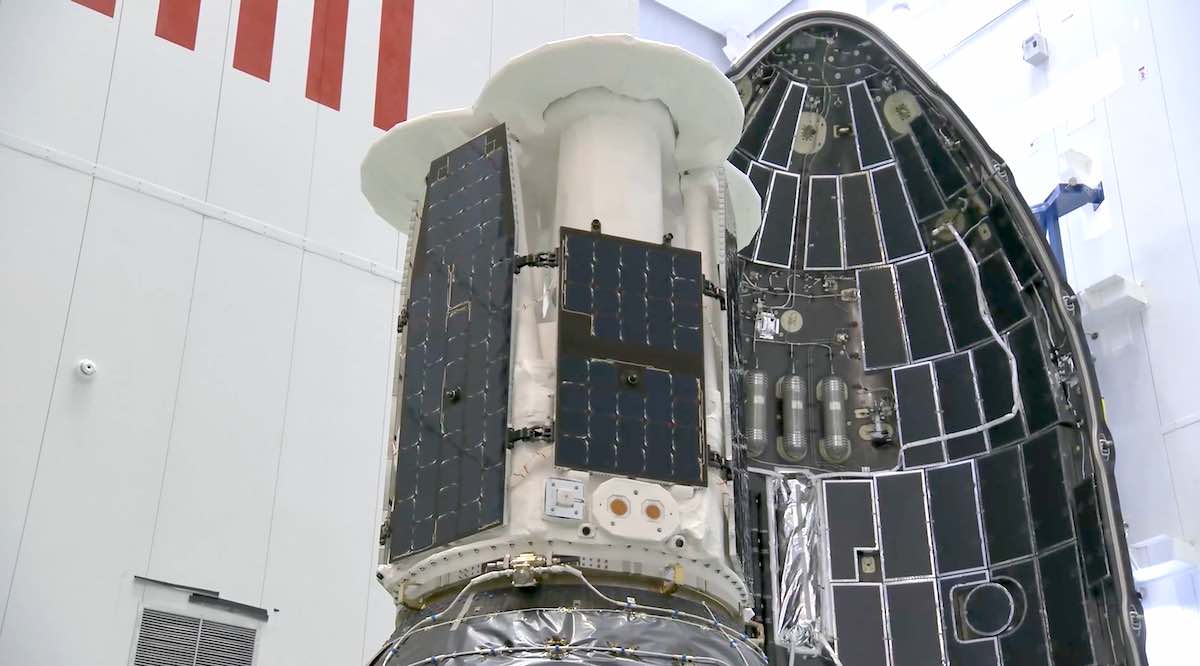
After checkout and commissioning first light operations are scheduled to begin in January.
Learn more about IXPE in this NASA video:
Video Caption: Meet NASA’s Newest Set of X-ray Eyes on the Universe. The Imaging X-ray Polarimetry Explorer mission is set to launch Dec. 9, 2021 on a Falcon 9 rocket from NASA’s Kennedy Space Center in Florida. In space, IXPE will explore the leftovers of exploded stars, black holes, and more by looking at a special property of light called polarization. Credit: NASA
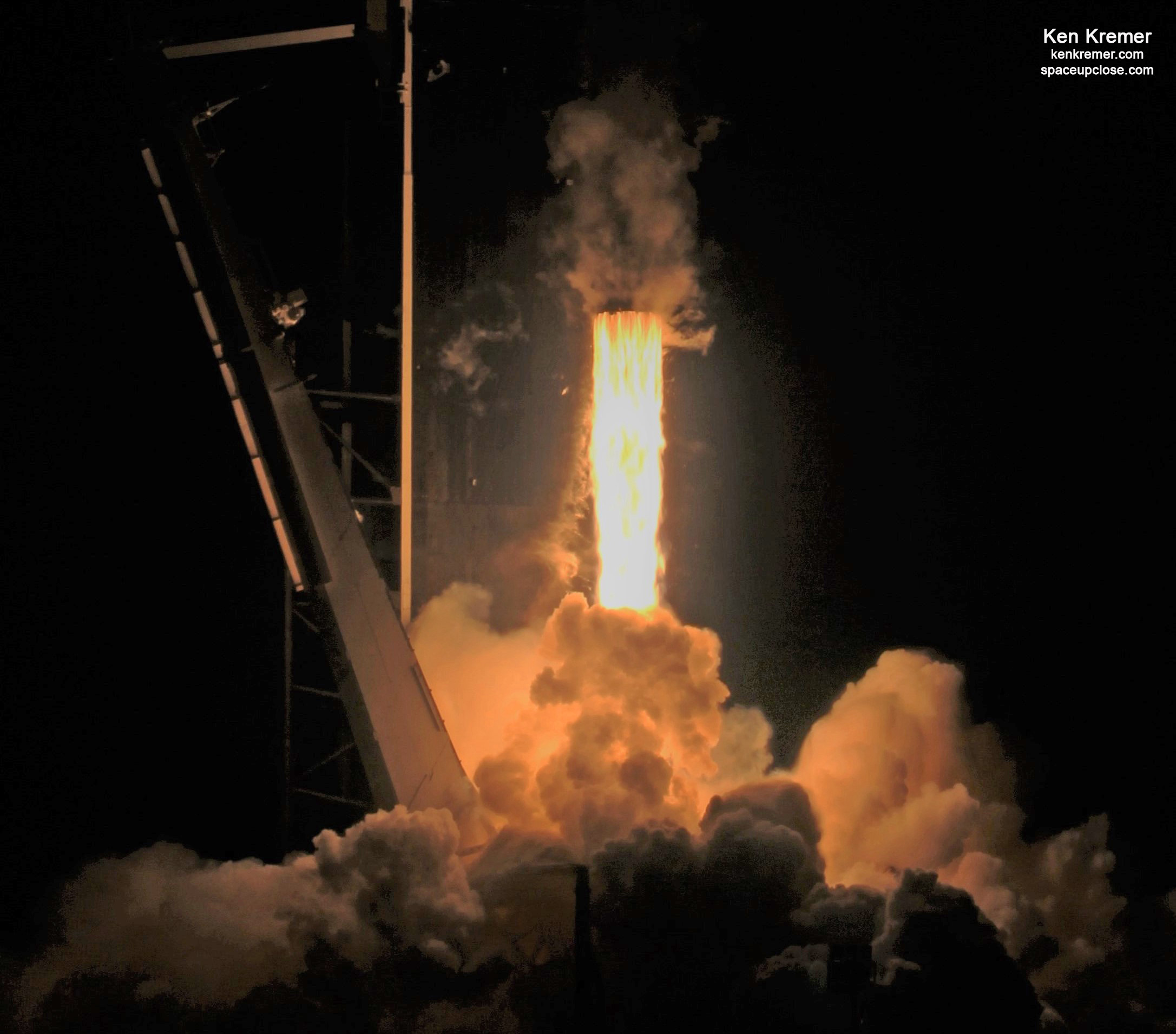
The ‘flight-proven’ Falcon 9 rocket booster B1061 has flown four times previously including 8 NASA astronauts on the Crew-1 and Crew-2 mission to the International Space Station (ISS), the SXM-8 geostationary comsats and the CRS-23 resupply mission to the ISS most recently this past August.
“This booster has launched eight astronauts, three dragon capsules and one geostationary spacecraft,” said Julianna Scheiman, SpaceX’s director of civil satellite missions, at the Dec. 7 media briefing.
“Reusability is key to lowering the cost of launch, which in turn enables greater investment and scientific research.”
After launching IXPE into space, the booster was brought back and landed on the SpaceX drone ship “Just Read the Instructions” (JRTI) off the coast of Florida.
Congratulations to the #IXPE team on a successful launch!
Here's what's next for our orbiting observatory as it prepares to look at the universe in a new (type of) light: https://t.co/utThH1uwFj pic.twitter.com/rHRpPWRdDm
— NASA (@NASA) December 9, 2021
Enjoy our UpClose launch and pre-launch pad 39A photos of the SpaceX Falcon 9 hosting IXPE taken by Ken Kremer for Space UpClose during our media remote camera setup 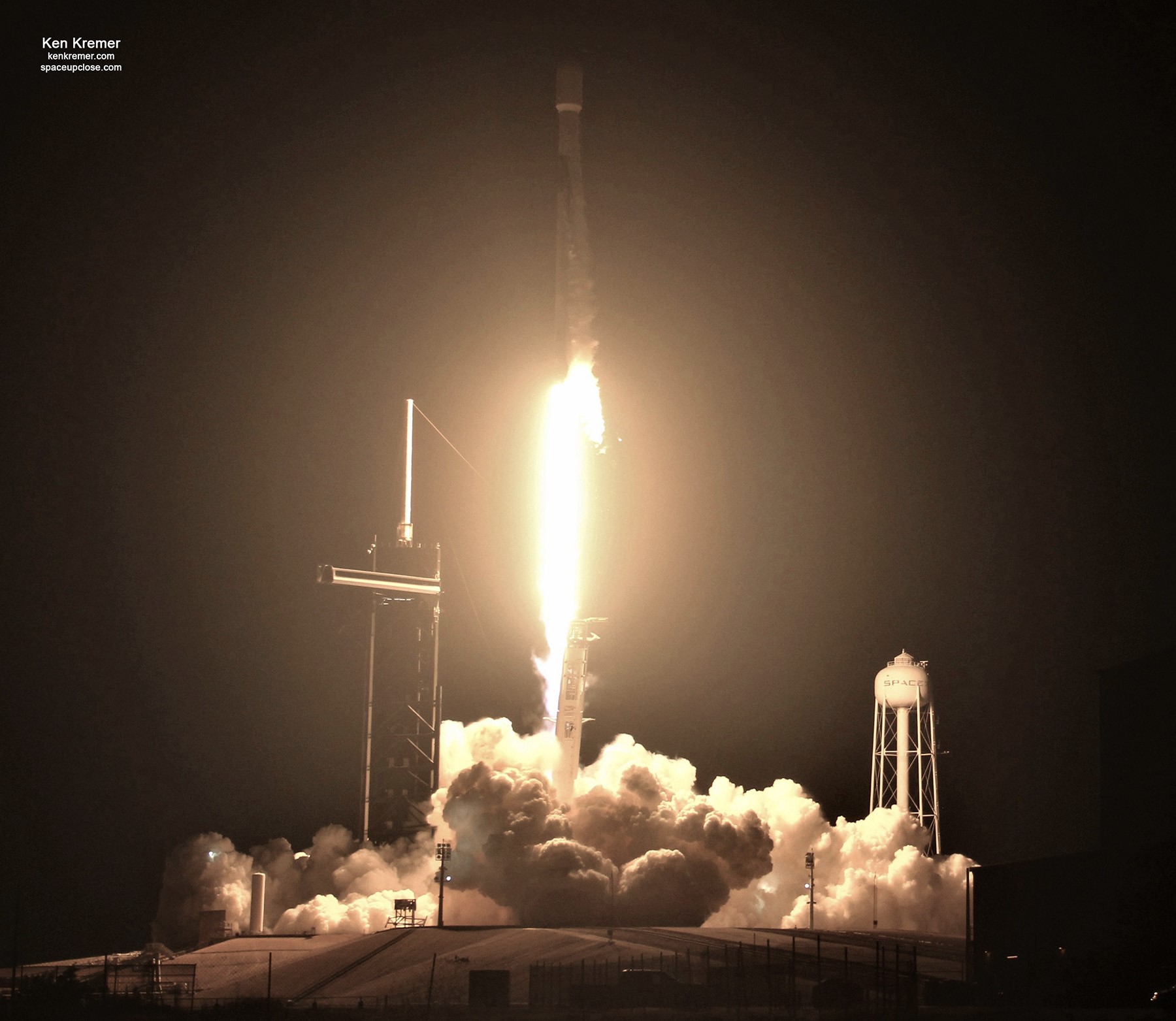
SpaceX Falcon 9 liftoff with NASA IXPE X-Ray space telescope on Dec. 9, 2021 at 1 a.m. EST from Launch Complex 39A on NASA’s Kennedy Space Center in Florida. IXPE is first satellite dedicated to measuring the polarization of X-rays from a variety of cosmic sources, such as black holes and neutron stars. Credit: Ken Kremer/SpaceUpClose.comNASA selected IXPE as a Small Explorer mission in 2017.
The IXPE project is a collaboration between NASA and the Italian Space Agency. NASA’s Marshall Space Flight Center in Huntsville, Alabama manages the IXPE mission. Ball Aerospace, headquartered in Broomfield, Colorado, manages spacecraft operations with support from the University of Colorado at Boulder.
Ball Aerospace built the spacecraft.

The launch is managed by NASA’s Launch Services Program, based at Kennedy.
NASA’s Goddard Space Flight Center in Greenbelt, Maryland, manages the Explorers Program for the agency’s Science Mission Directorate in Washington.
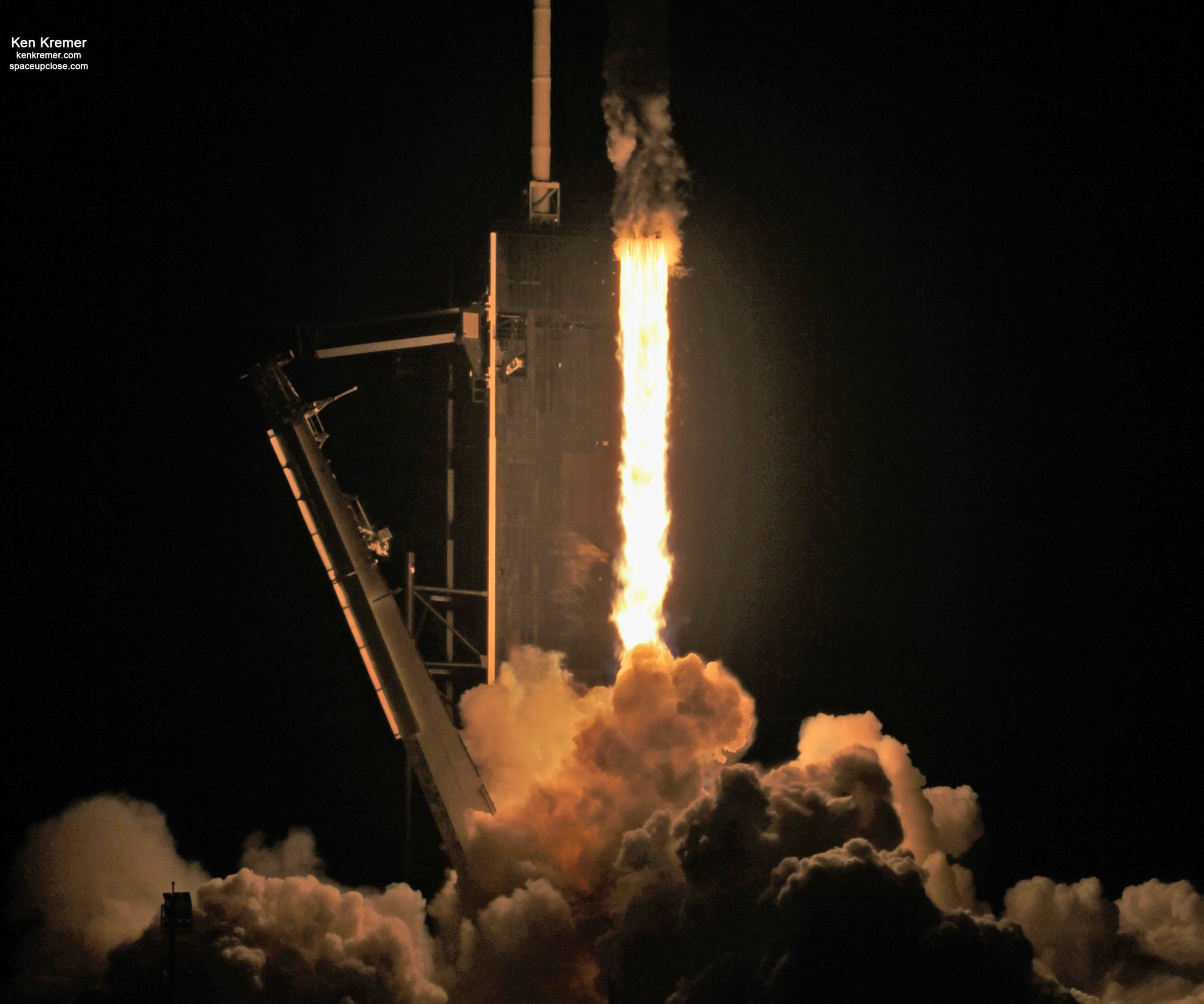
IXPE is the second SpaceX Falcon 9 mission to launch in a week from the Cape following the Starlink 4-3 launch on Dec. 2
SpaceX has two more launches planned from KSC before the end of the year
Turksat-5B comsat is scheduled for Dec. 18 from pad 40 and the NASA CRS-24 resupply mission to the ISS on Dec. 21
Watch Ken’s continuing reports about IXPE, DART, National Security missions SpaceX Crew and Cargo Dragons, Artemis, SLS, Orion and NASA missions, Lucy Asteroid mission, SpaceX Starlink, Blue Origin and Space Tourism, Commercial Crew and Starliner and Crew Dragon and onsite for live reporting of upcoming and recent SpaceX and ULA launches including Crew 1 & 2 & 3, ISS, Solar Orbiter, Mars 2020 Perseverance and Curiosity rovers, NRO spysats and national security missions and more at the Kennedy Space Center and Cape Canaveral Space Force Station.
Stay tuned here for Ken’s continuing Earth and Planetary science and human spaceflight news: www.kenkremer.com –www.spaceupclose.com – twitter @ken_kremer – email: ken at kenkremer.com
Dr. Kremer is a research scientist and journalist based in the KSC area, active in outreach and interviewed regularly on TV and radio about space topics.
………….
Ken’s photos are for sale and he is available for lectures and outreach events
Please consider supporting Ken’s work by purchasing his photos and/or donating at Patreon:
https://www.patreon.com/kenkremer
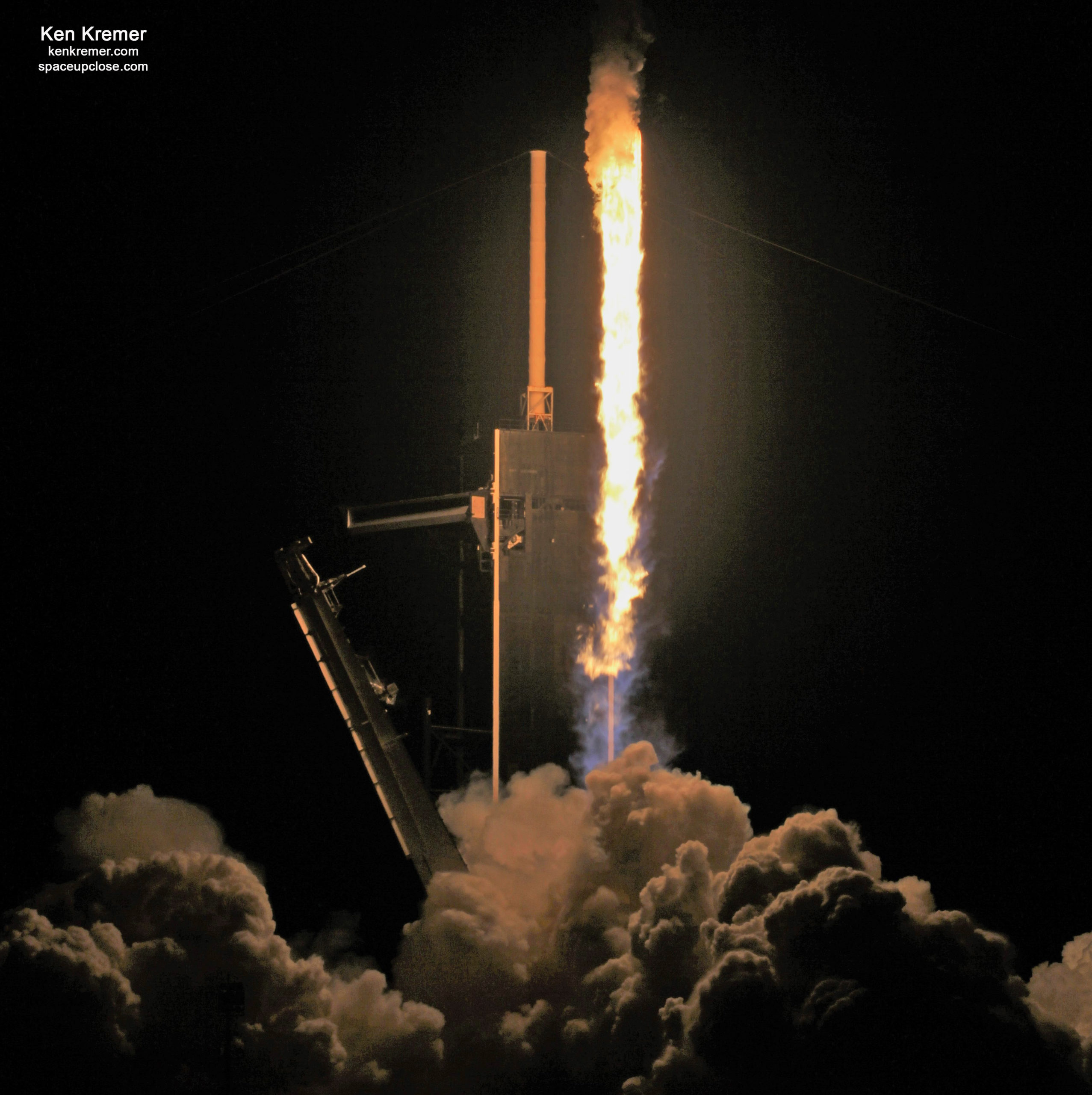
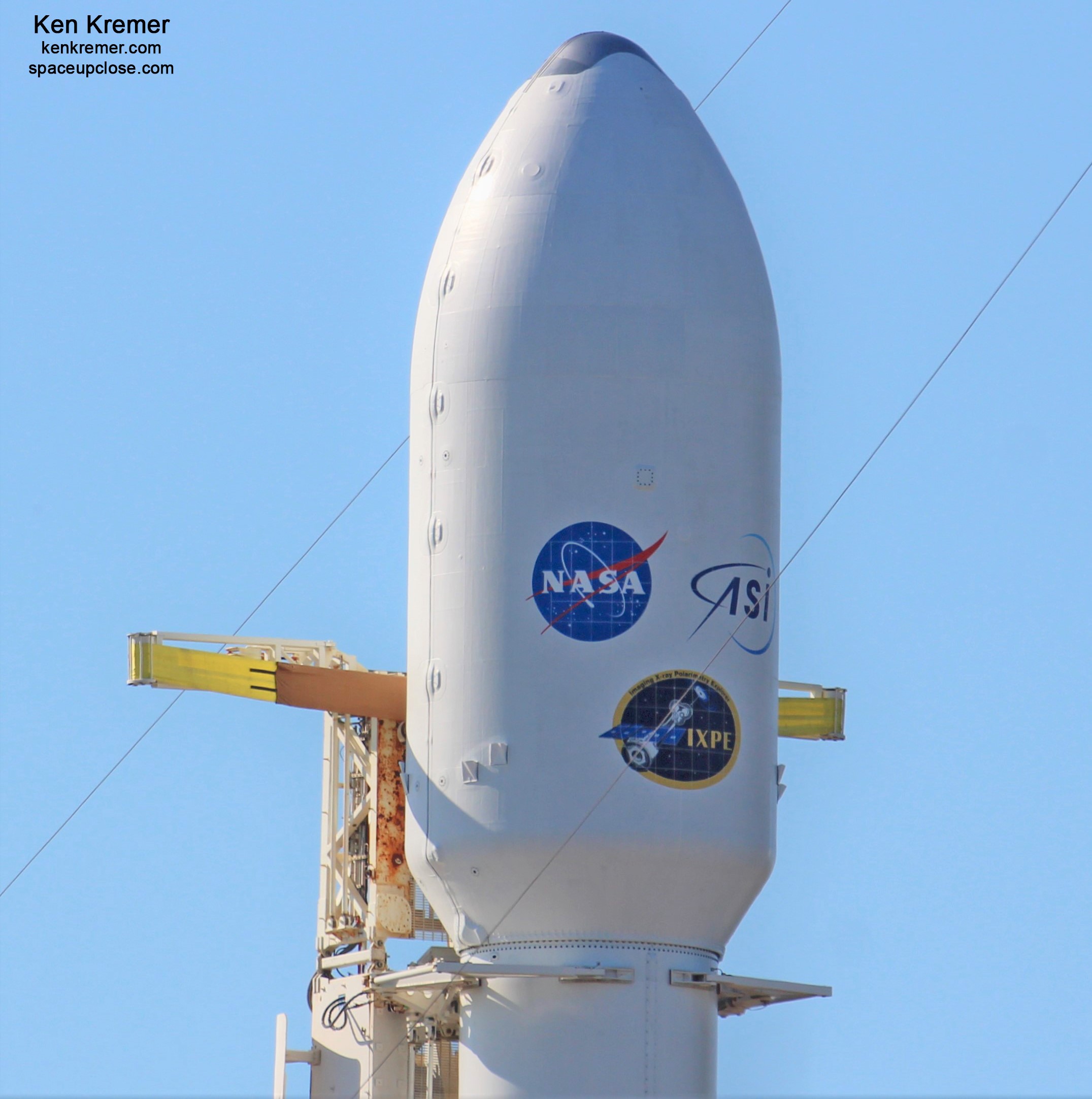
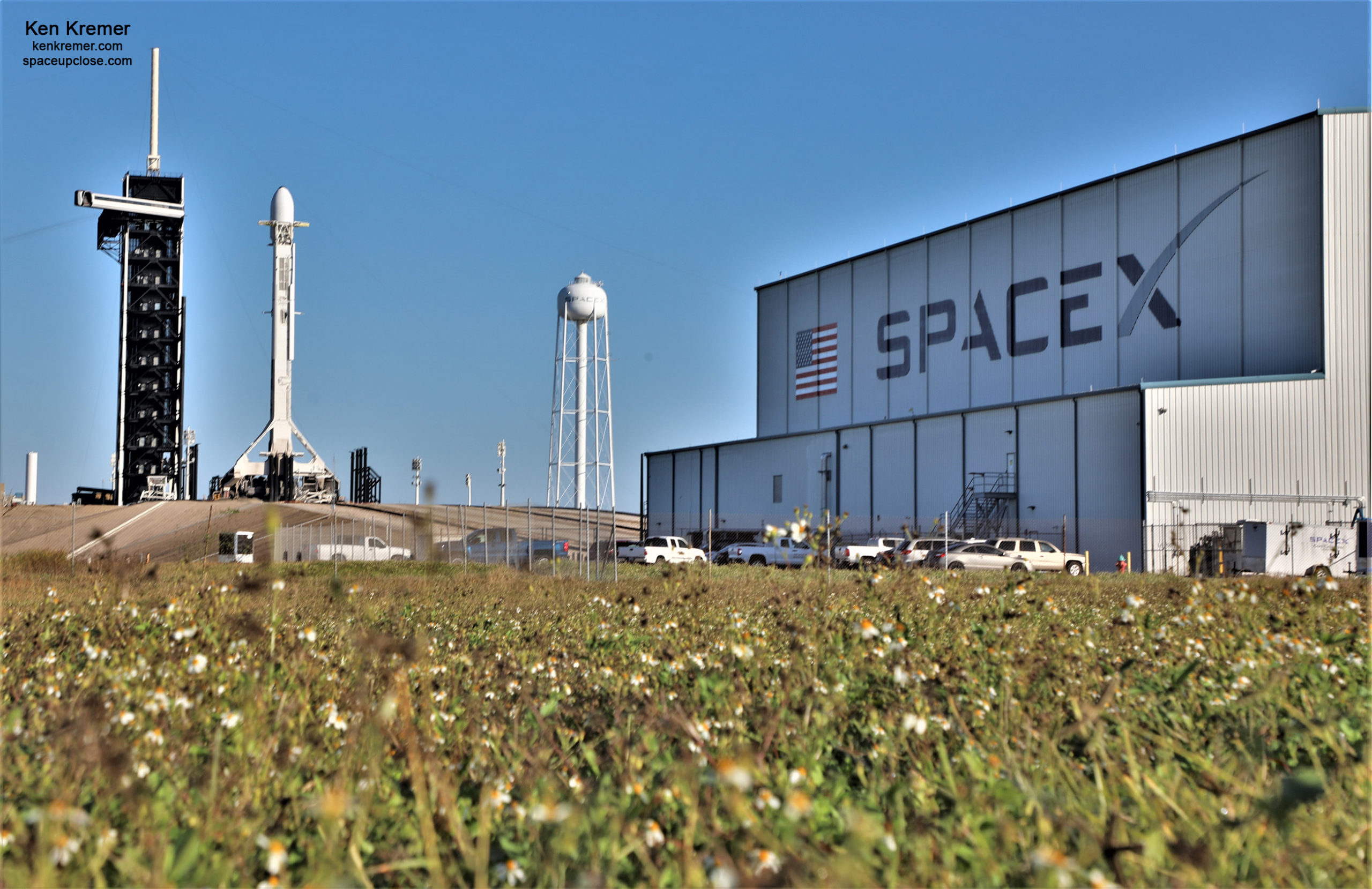
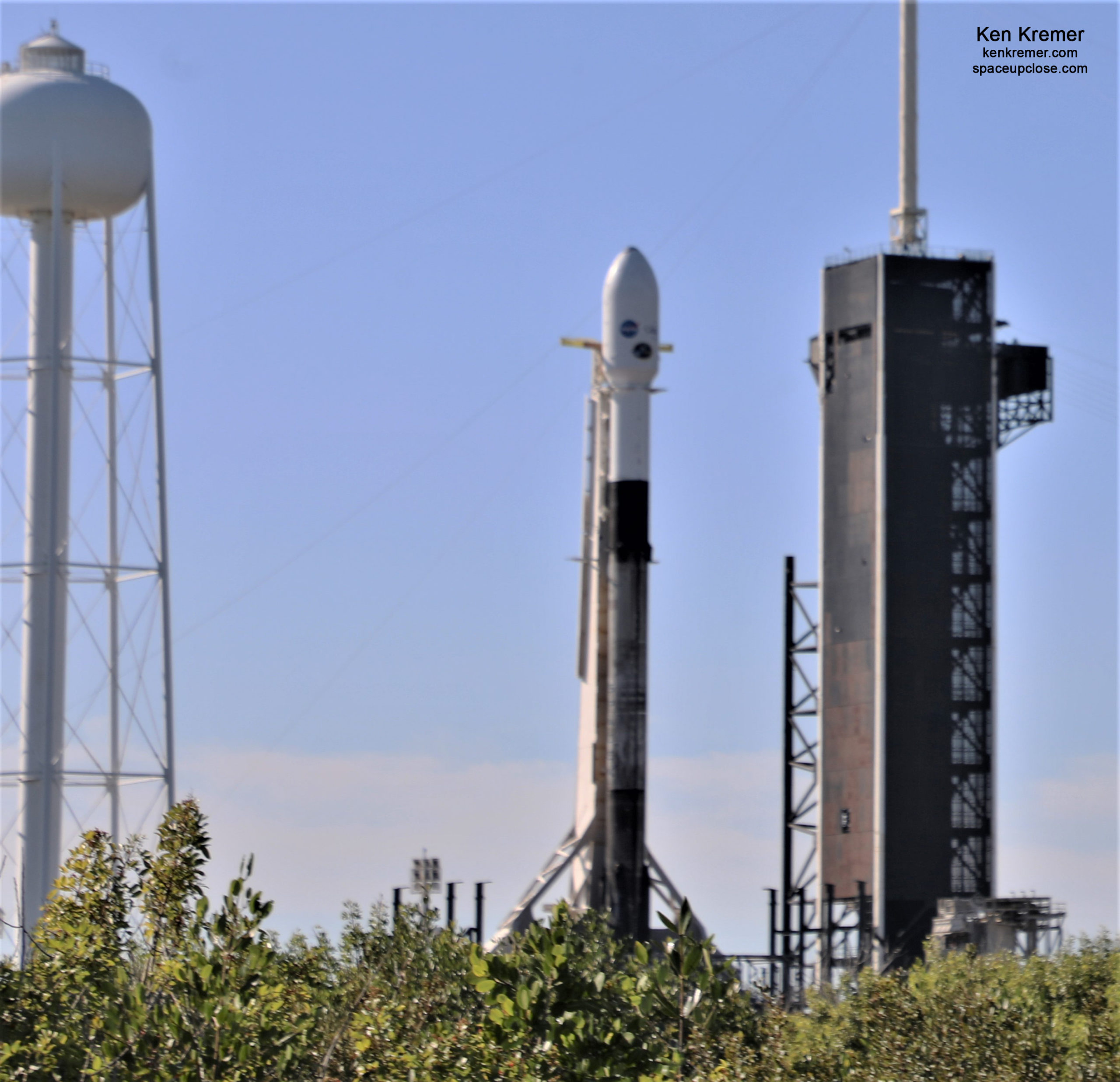
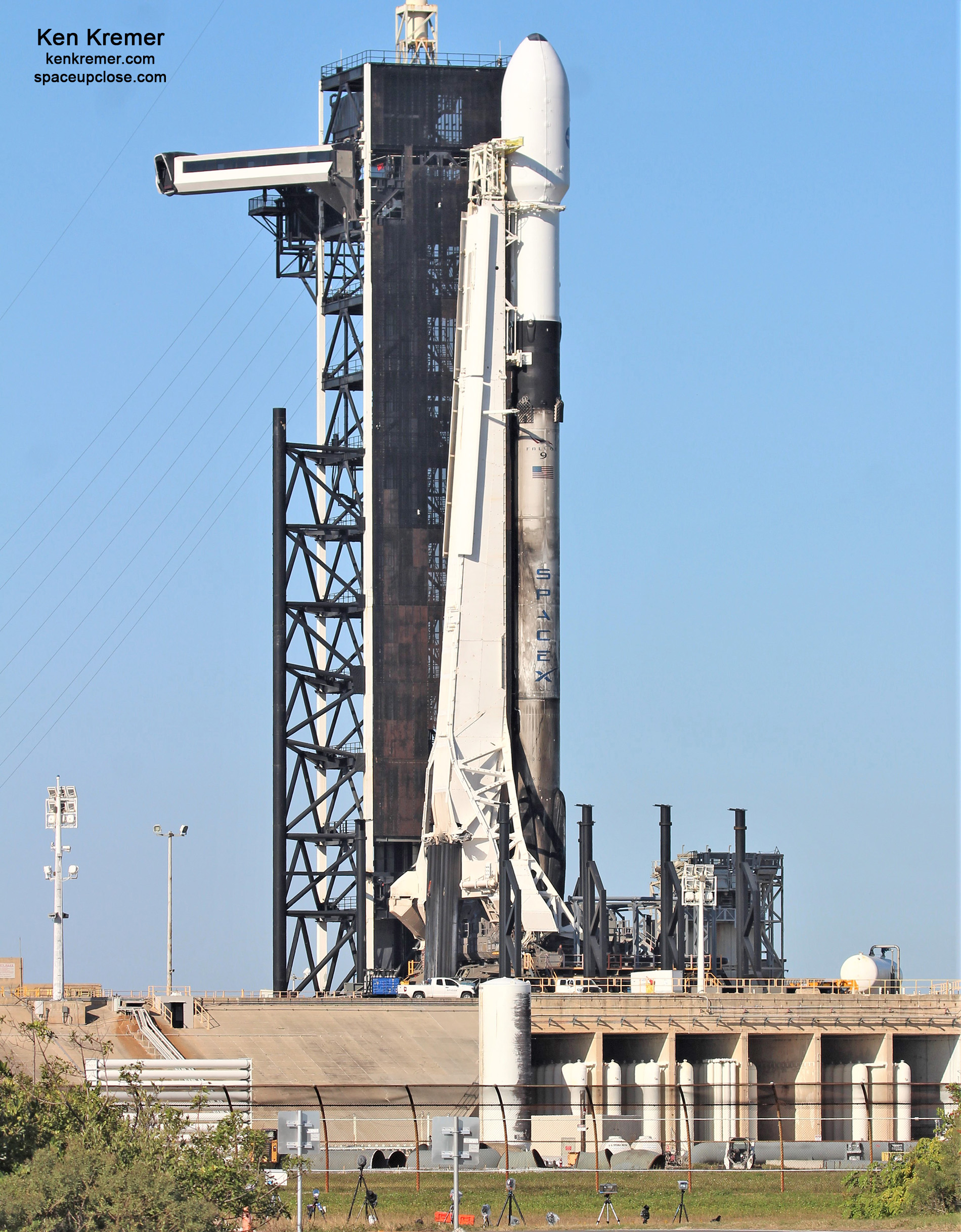

x



